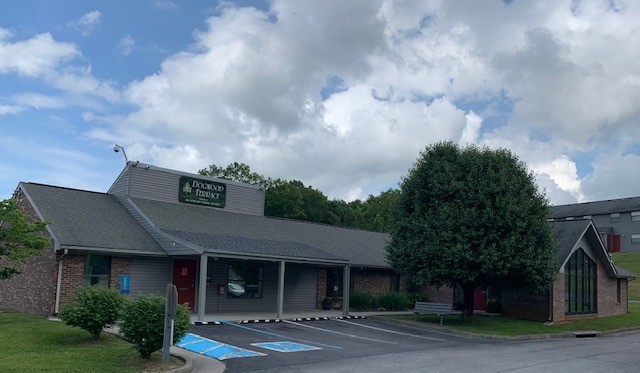Programs
Housing Choice Voucher
Housing Choice Voucher FAQs
Eligibility for a housing voucher is determined by the PHA based on the total annual gross income and family size and is limited to US citizens and specified categories of non-citizens who have eligible immigration status. In general, the family’s income may not exceed 50% of the median income for the county or metropolitan area in which the family chooses to live. By law, a PHA must provide 75 percent of its voucher to applicants whose incomes do not exceed 30 percent of the area median income. Median income levels are published by HUD and vary by location. The PHA serving your community can provide you with the income limits for your area and family size. During the application process, the PHA will collect information on family income, assets, and family composition. The PHA will verify this information with other local agencies, your employer and bank, and will use the information to determine program eligibility and the amount of the housing assistance payment If the PHA determines that your family is eligible, the PHA will put your name on a waiting list. Once your name is reached on the waiting list, the PHA will contact you and issue you a housing voucher.
A family’s housing needs change over time with changes in family size, job locations, and for other reasons. The housing choice voucher program is designed to allow families to move without the loss of housing assistance. Moves are permissible as long as the family notifies the PHA ahead of time, terminates its existing lease within the lease provisions, and finds acceptable alternate housing. Under the voucher program, new voucher-holders may choose a unit anywhere in the United States if the family lived in the jurisdiction of the PHA issuing the voucher when the family applied for assistance. Those new voucher-holders not living in the jurisdiction of the PHA at the time the family applied for housing assistance must initially lease a unit within that jurisdiction for the first twelve months of assistance. A family that wishes to move to another PHA’s jurisdiction must consult with the PHA that currently administers its housing assistance to verify the procedures for moving.
The housing choice voucher program places the choice of housing in the hands of the individual family. A very low-income family is selected by the PHA to participate is encouraged to consider several housing choices to secure the best housing for the family needs. A housing voucher holder is advised of the unit size for which it is eligible based on family size and composition. The housing unit selected by the family must meet an acceptable level of health and safety before the PHA can approve the unit. When the voucher holder finds a unit that it wishes to occupy and reaches an agreement with the landlord over the lease terms, the PHA must inspect the dwelling and determine that the rent requested is reasonable. The PHA determines a payment standard that is the amount generally needed to rent a moderately-priced dwelling unit in the local housing market and that is used to calculate the amount of housing assistance a family will receive. However the payment standard does not limit and does not affect the amount of rent a landlord may charge or the family may pay. A family which receives a housing voucher can select a unit with a rent that is below or above the payment standard. The housing voucher family must pay 30% of its monthly adjusted gross income for rent and utilities, and if the unit rent is greater than the payment standard the family is required to pay the additional amount. By law, whenever a family moves to a new unit where the rent exceeds the payment standard, the family may not pay more than 40 percent of its adjusted monthly income for rent.
The PHA administers the voucher program locally. The PHA provides a family with the housing assistance that enables the family to seek out suitable housing and the PHA enters into a contract with the landlord to provide housing assistance payments on behalf of the family. If the landlord fails to meet the owner’s obligations under the lease, the PHA has the right to terminate assistance payments. The PHA must reexamine the family’s income and composition at least annually and must inspect each unit at least annually to ensure that it meets minimum housing quality standards.
To cover the cost of the program, HUD provides funds to allow PHAs to make housing assistance payments on behalf of the families. HUD also pays the PHA a fee for the costs of administering the program. When additional funds become available to assist new families, HUD invites PHAs to submit applications for funds for additional housing vouchers. Applications are then reviewed and funds awarded to the selected PHAs on a competitive basis. HUD monitors PHA administration of the program to ensure program rules are properly followed.
If you are interested in applying for a voucher, contact the Big Stone Gap Housing Authority at 523-4788 or apply in person at 170 Dogwood Terrace, Big Stone Gap, VA 24219.
The role of the landlord in the voucher program is to provide decent, safe, and sanitary housing to a tenant at a reasonable rent. The dwelling unit must pass the program’s housing quality standards and be maintained up to those standards as long as the owner receives housing assistance payments. In addition, the landlord is expected to provide the services agreed to as part of the lease signed with the tenant and the contract signed with the PHA.
Since the demand for housing assistance often exceeds the limited resources available to HUD and the local housing agencies, long waiting periods are common. In fact, a PHA may close its waiting list when it has more families on the list than can be assisted in the near future. PHAs may establish local preferences for selecting applicants from its waiting list. The Big Stone Gap Redevelopment & Housing Authority give a preference to a family who is (1) Elderly, disabled or handicapped, or (2) living inside the corporation limits of Big Stone Gap. Families who qualify for any such local preferences move ahead of other families on the list who do not qualify for any preference. Each PHA has the discretion to establish local preferences to reflect the housing needs and priorities of its particular community.
Once a PHA approves an eligible family’s housing unit, the family and the landlord sign a lease and, at the same time, the landlord and the PHA sign a housing assistance payments contract that runs for the same term as the lease. This means that everyone — tenant, landlord and PHA — has obligations and responsibilities under the voucher program.
When a family selects a housing unit, and the PHA approves the unit and lease, the family signs a lease with the landlord for at least one year. The tenant may be required to pay a security deposit to the landlord. After the first year the landlord may initiate a new lease or allow the family to remain in the unit on a month-to-month lease. When the family is settled in a new home, the family is expected to comply with the lease and the program requirements, pay its share of rent on time, maintain the unit in good condition and notify the PHA of any changes in income or family composition.
The PHA calculates the maximum amount of housing assistance allowable. The maximum housing assistance is generally the lesser of the payment standard minus 30% of the family’s monthly adjusted income or the gross rent for the unit minus 30% of monthly adjusted income.
The housing choice voucher program is the federal government’s major program for assisting very low-income families, the elderly, and the disabled to afford decent, safe, and sanitary housing in the private market. Since housing assistance is provided on behalf of the family or individual, participants are able to find their own housing, including single-family homes, townhouses and apartments. The participant is free to choose any housing that meets the requirements of the program and is not limited to units located in subsidized housing projects. Housing choice vouchers are administered locally by public housing agencies(PHAs). The PHAs receive federal funds from the U.S. Department of Housing and Urban Development (HUD) to administer the voucher program. A family that is issued a housing voucher is responsible for finding a suitable housing unit of the family’s choice where the owner agrees to rent under the program. This unit may include the family’s present residence. Rental units must meet minimum standards of health and safety, as determined by the PHA. A housing subsidy is paid to the landlord directly by the PHA on behalf of the participating family. The family then pays the difference between the actual rent charged by the landlord and the amount subsidized by the program.
Regulations are found in 24 CFR Part 982.
Housing Choice Voucher Income Limits
Number in Household | Very Low (50%) Income Limits ($) | Extremely Low Income Limits ($) |
|---|---|---|
1 | $24,750 | $14,850 |
2 | $28,250 | $19,720 |
3 | $31,800 | $24,860 |
4 | $35,300 | $30,000 |
5 | $38,150 | $35,140 |
6 | $40,950 | $40280 |
7 | $43,800 | $43,800 |
8 | $46,600 | $46,600 |
Payment Standards
Year | efficiency | One-Bedroom | Two-Bedroom | Three-Bedroom | Four-Bedroom |
|---|---|---|---|---|---|
FY 2022 | $489 | $631 | $772 | $941 | $1047 |
FY 2023 | $646 | $720 | $872 | $1200 | $1258 |
Wise County, Norton City, VA HUD Nonmetro FMR Area: $62,700
Rehabilitation Loans
The purpose of the rehabilitation program through the Big Stone Gap Redevelopment & Housing Authority is to provide financial assistance to very low and low income persons to be used in the rehabilitation of their homes. This is in an effort to meet emergency needs of the homeowner such as heating systems, roof problems, insulation, electrical hazards, plumbing problems and accessibility for handicapped individuals.
It is the intent of this program that financial assistance be made available to those persons who cannot afford or cannot obtain conventional financing for use in rehabilitating their homes. The Big Stone Gap Redevelopment & Housing Authority may provide necessary loans to qualified applicants with repayment calculated according to each applicant’s ability to pay. As these loans are paid, the program income is used to extend the assistance to other low income residents in need of assistance on their homes.
How to apply: Please contact the office to request an application.

Apply for Housing
Print Off Application Forms
Print off and fill out the housing application forms to be considered for one of our programs. Each program has a separate application process. Click the button to find the correct forms for the program you are interested.
Submit Forms
Send your completed application forms to us at bsgha@bsgha.org. You may also fax them to 276-523-5141 or drop them off at our office location of 170 Dogwood Terrace,
Big Stone Gap, VA 24219.
Get in Touch
We’re here to help you find affordable housing in Big Stone Gap. Contact us today for more information about your application, available properties, eligibility guidelines, available resources, and more.


